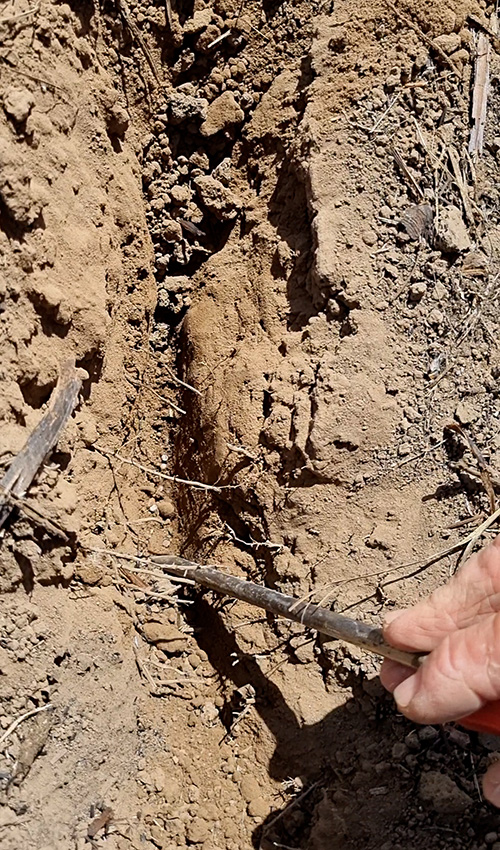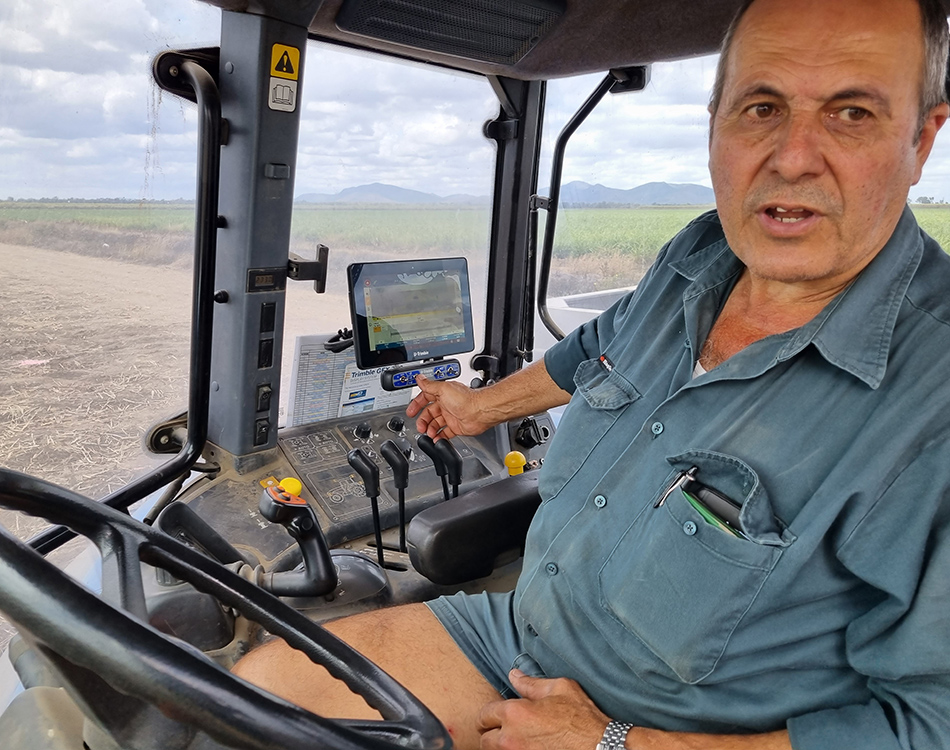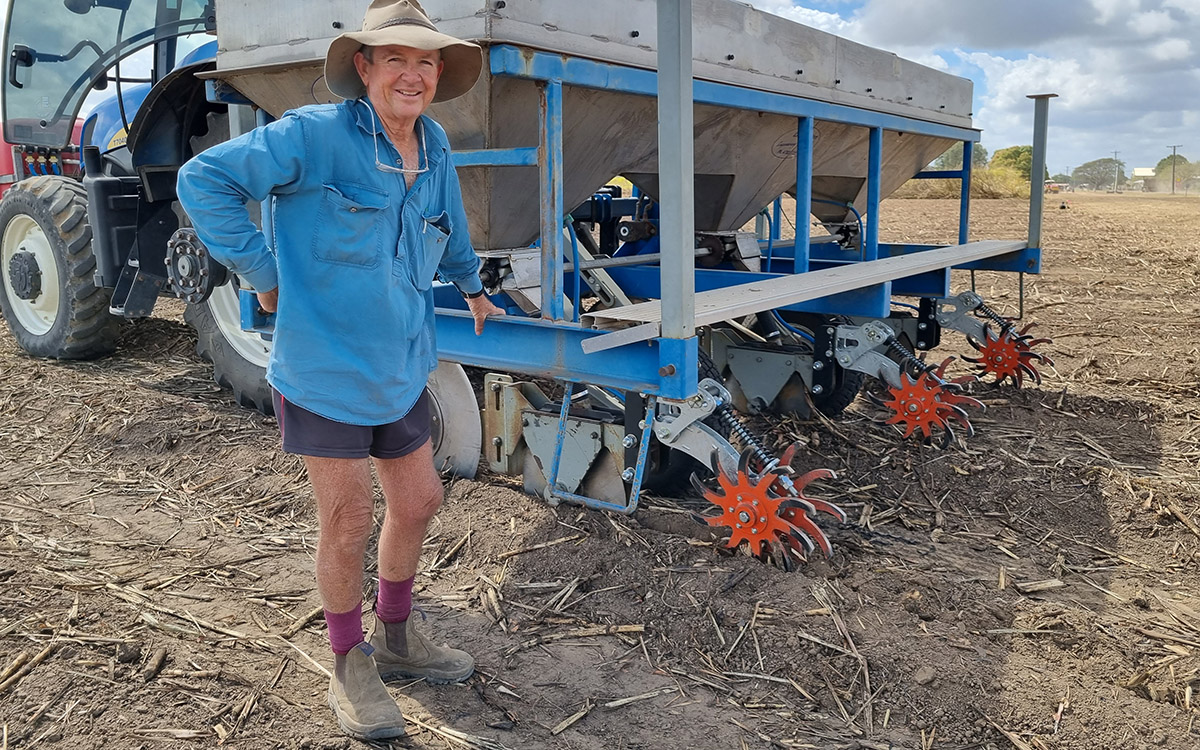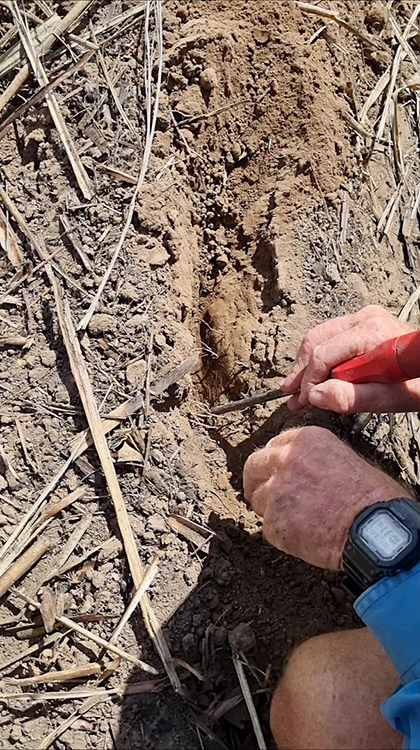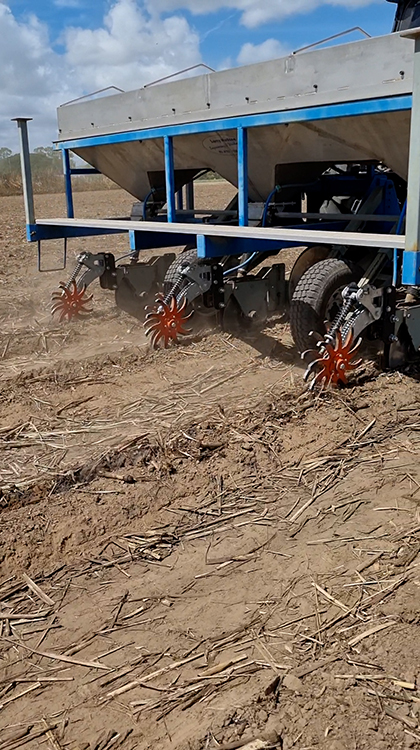Zippas close the fertiliser groove… and a nitrogen loss pathway
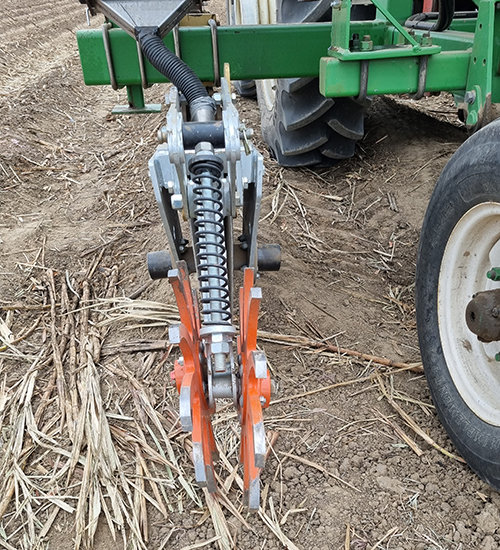
StoolZippas, funded through NQ Dry Tropics’ Lower Burdekin Major Grants project have improved the effectiveness of fertiliser applied by participating cane farmers.
StoolZippas are designed to ensure fertiliser and pesticide applied during routine farming operations, are completely covered by soil.
Adequate cover reduces the risk of nitrogen (N) loss through denitrification and volatilisation.
Trial results showed N and pesticide loss through irrigation runoff down the row was less prevalent where the StoolZippa had been used.
It means more N stays in the soil where it is available for the crop, it improves water quality and reduces greenhouse gas emissions.
The action of the Zippas more effectively closes the slot in the same pass when applying fertiliser or pesticide.
Minimising nutrient and pesticide loss pathways also has an enduring environmental benefit.
NQ Dry Tropics’ Major Grants project offered growers an opportunity to get financial assistance to install StoolZippas with the knock-on benefits to the Great Barrier Reef in mind.
Mario Barbagello has used the StoolZippa on his 40ha Clare block since July.
The Zippa is one of a number of changes he has made this season to the way he kicks off ratoon crops on the Clare farm, with a very different soil profile to his Haughton River farm.
Grower Scott Harness digs down to check on where the fertiliser has been buried.
Previously, he would water the Clare crop after the harvester had been through, wait for it to dry, then use a stool splitter to drop fertiliser into the split and drag chains behind to cover it over.
“Now, I have gone in with the StoolZippa straight after the harvester,” Mario said.
“It’s doing a good job, so the fertiliser is safely lying in the split and is well covered with soil.”
Although he is applying N about a month earlier than previously, he is confident it won’t be lost.
“It will be there for the plant when it’s ready to take it up,” Mario said.
Mario said the only hitch he had with using the Zippa was with the flow rate from his fertiliser box which he would address in the down time.
Mario said he had opted for an Enhanced Efficiency Fertiliser, or slow-release fertiliser, that cost an extra $80 per tonne but he thought it was worth the money to ensure he was addressing all the loss pathways.
If less N is lost, farmers will potentially have the option to apply less, saving significant input costs.
He said the grant through NQ Dry Tropics was particularly beneficial because with that little bit of extra help, he was able to have the Zippa fitted by the engineers who built it, ensuring it worked properly from the outset.
Grower Mario Barbagallo at the wheel of his tractor.
Mario said he thought he could already see the crop doing better than previous ratoons.
“It’s green already and almost a metre tall and that’s just since July,” he said.
Fellow Clare grower Scott Harness is impressed by the StoolZippa he has been using for about six weeks on his 100ha farm.
“The fingers of the Zippa break down the sides of the groove and pack the soil on top of the fertiliser very nicely,” he said.
“I was a believer in side-dressing, but when you run the fertiliser along the side of the hill, that’s where the bulk of the water is as well.”
Scott said a few years ago, he went back to stool-splitting, using a chain behind the coulter discs to drag soil back over the groove where the fertiliser was placed.
“It was okay, provided there was enough loose soil left behind after harvesting,” Scott said.
“With the Zippa, it presses the soil down and the fertiliser is in the bed quite firmly with no possibility of losing it to volatilisation or of it being washed away.
Grower Scott Harness with his StoolZippa.
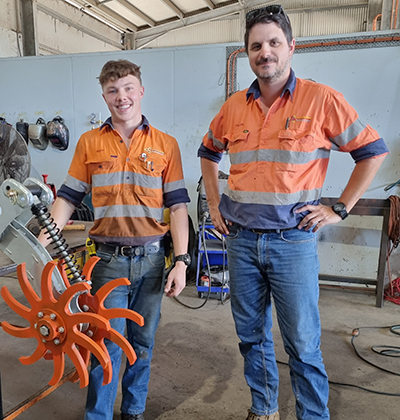
“The plant has more chance of getting 100 per cent of that.”
He said, as was his custom, he ran a three-row roller over the paddock after the fertiliser was applied.
“That’s as much to even out the hills a little as it is to ensure the job of sealing in the fertiliser has been done properly,” he said.
“Up here in the lighter soil, it’s piece of mind as much as anything.”
Scott said the Zippa was “fairly straightforward” to fit and set up.
“At first, it was set too deep and was flicking up some of the fertiliser, but raising it by about 25mm solved that,” he said.
The second round of the Major Grants project will focus on improvements to irrigation systems.
In collaboration with Sugar Research Australia, 12 additional irrigation projects are underway to complement the Burdekin Irrigation Project.
The growers receive detailed irrigation baseline assessments, irrigation improvement plans and funding, and technical support to implement agreed improvements.
A final round of projects began recently offering a range of nutrient and irrigation improvements, which combined with GPS technology, rate controllers and other equipment, will build farmers’ capacity to improve nutrient and water use efficiency.
Click here to view video.
Click here to view video.

